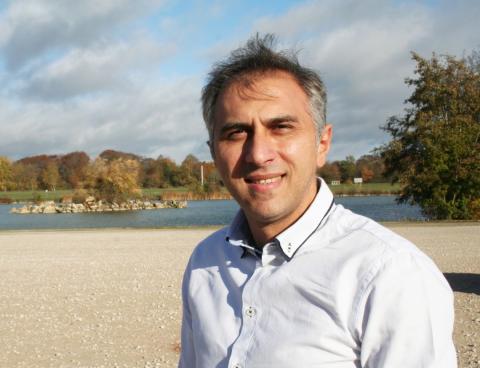
Riad Haidar: Detecting the undetectable
Riad Haidar, research director at France's national aerospace research center (ONERA), has received the Prix Aymé Poirson, awarded annually by the Académie des sciences to recognize outstanding applications of science to industry. Wearing multiple hats – engineer, researcher, professor and editor-in-chief of Photoniques, the bimonthly journal of the Société française d’optique – Riad Haidar works in nanophotonics, a field in which optics meets electronics, and develops applications for the aeronautics industry.
An optical engineer by training, Riad Haidar studies the behavior of light. For instance, he carries out spectral analysis to determine the composition of the air. "Using infrared radiation, we can detect elements invisible to the naked eye, such as pollutants or molecules that normally aren't there. There are several solutions available – compact, macroscopic or integrated – that present a varying degree of complication. Eventually, we'd like to test on-board instruments in flight and study how they behave. Our applications are geared towards national defense and include navigational aids for our civil or military aviation," he explains. Several of his patents originated in joint projects with the aeronautics industry.
Basic research with real-world applications
"When I first came to work at ONERA, I set up a working group to study nanophotonics, the study of light on the nano scale, a field just emerging at the time. To satisfy demand for compact and integrated systems, we knew that we would need to address many theoretical, technological and experimental aspects. For this purpose, we set up the micro- and nano-optics lab (MiNaO) together with France's Centre for Nanoscience and Nanotechnology (C2N)." Today, Riad Haidar oversees some 400 physics researchers at ONERA. "We partner with companies like Airbus, Safran and Thales, or their service providers and suppliers, developing basic concepts and bringing them to industrial maturity."
From Senegal to Saclay
Born in Senegal, Riad Haidar attended a French lycée in Dakar, then went to Paris to prepare for competitive exams to gain admission to top engineering schools. He graduated from the École supérieure d’optique and defended his PhD at ONERA in 2003. "I always wanted to do research and teach. In high school, I became fascinated with optics, inspired by a gifted teacher. I loved working in the electronics club lab and devoured the few pop science magazines in the library. Little did I suspect that one of the magazine's contributors, Emmanuel Rosencher, would later be my thesis advisor."
Transmitting passion
Research work has its high moments. For Riad Haidar, a special moment occurs when "a drawing on paper materializes as a physical object with measurable properties that behaves as expected in theory." Another source of satisfaction is "seeing my doctoral students do well in research." In short, Riad Haidar believes in passing the torch. "It's absolutely vital to advocate for research and transmit our passion to the next generation," because "educating and training an adequate number of researchers and engineers is a key to France's industrial sovereignty."

